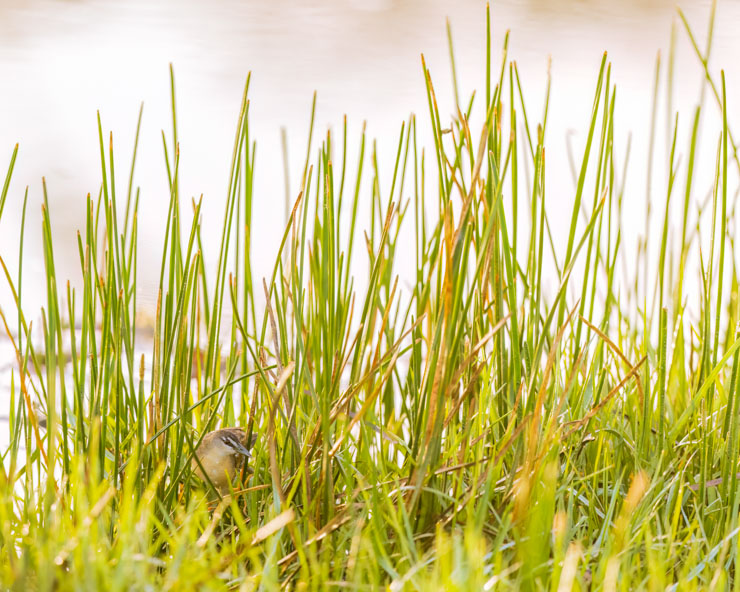
The title of this post is only slightly misleading. Let me explain.
On a nondescript day some time ago I came across a photo of a Yellow-breasted Crake at a local wetland – I was subsequently informed by my friend and colleague Rainer Deo that river conditions had been incredibly ideal to view this normally reclusive species. Such is the level of difficulty of seeing a Yellow-breasted Crake I typically ignore client requests to see this species. Thus, I hastily accepted the gracious invitation extended by Rainer to put my eyes on a beauty of a tiny bird.
To put things into context, the first words of the first sentence in the description of Yellow-breasted Crake on Birds of the World are “Tiny and seldom seen”. Accounts of this bird’s incredulous ability to keep itself hidden are as wide-ranging as the bird itself. It is not without reason as I myself have heard its strident three-note call innumerable times over the years but had only seen it twice. First time was after an extended, single-minded hunt that involved hours of searching floating vegetation in scorching temperatures. No fewer than twenty eyes and ears were tuned in and we all struggled. The bird would vocalise and then teleport to another unseen location without disturbing the vegetation. I caught a glimpse once as it slid through the water hyacinth. It was then that I believed the tales of crakes walking unnoticed between the legs of keen birders who must still be very frustrated as a result.
A few years later I picked up a couple clients and visited a wetland in southern Trinidad. As we rounded a bend, in the middle of a clearing just a few centimetres from the edge of the shallow water in full view was a Yellow-breasted Crake. I tried my hardest to communicate the urgency and the utter rarity of that sighting to my clients who nonchalantly shrugged the sighting off as a brownish bird poking around in the mud. I raged silently as it strolled along the water’s edge, unconcerned as it surely knew I didn’t have my camera.
Fast forward to the day of the crake mission – I therefore arrived on site with an expectation to be disappointed. It was in the pre-dawn, as Rainer suggested. I walked with him along the river, but something was different. Some vegetation had shifted a bit. He motioned to the banks where the bird had been prancing about the day before; I tried to play it cool by photographing a Cocoi Heron whose personal space we had just invaded.
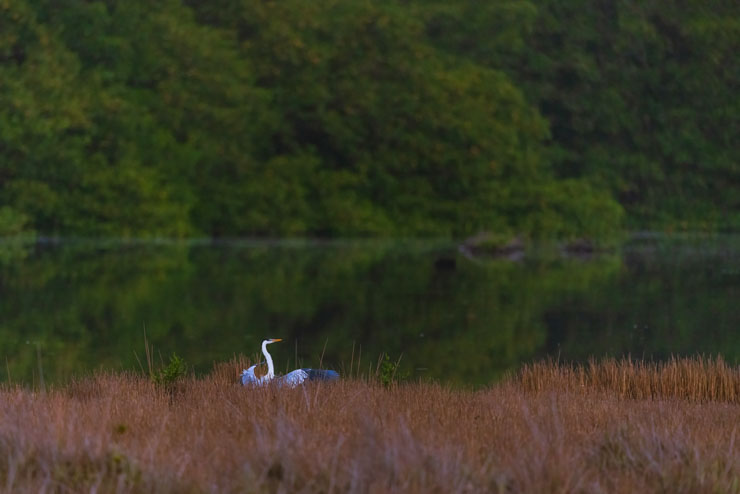
Cocoi Heron
There was no hiding my intention, however, and despite the banks being devoid of birds we stuck to the task and successfully ignored every other sighting. American Flamingos and Black-necked Stilts waded in the shallow ponds while a Green-throated Mango whizzed past, drizzling its musical song over the landscape. The clock ticked and the sun sprung into the sky, yet there was no crake in sight. This was entirely unsurprising. I recalled strolling into a local lodge where folks had been basking in the sight of an adult Ornate Hawk-Eagle sitting out the rain on a nearby cecropia tree for maybe about an hour prior to my arrival. It flew off maybe two minutes before I arrived. I saw cell phone photos of it, in case I doubted the accounts. I nearly tossed my camera in the bush that morning.
Rainer pulled me from the sea of despondent thoughts with a sharp “there it is” – and finally – there it really was! A head poked out from the reeds, carefully brushed white and brown. As it emerged into full view I could make out its namesake yellow breast and flanks neatly barred black and white. A consummate crake, tailless and furtive, its hunched and almost comical posture belied its potency as a shapeshifting hunter of tiny gastropods.

Yellow-breasted Crake
After seeing the bird well I questioned its name as its breast is only very remotely yellowish if at all. The subspecies found in Trinidad has the darkest frontal coloration and yet it seems that it was once upon a time fiery yellow-orange that got washed too many times. But avian nomenclature is a completely different conversation altogether. For the moment, I enjoyed the fleeting sighting as it poked around for its breakfast.

An illustration of how a Yellow-breasted Crake can hide in plain sight.
Eventually the crake moved off to the opposite bank, and we shifted focus to our own breakfast. Not before enjoying the resident flamingos, however.
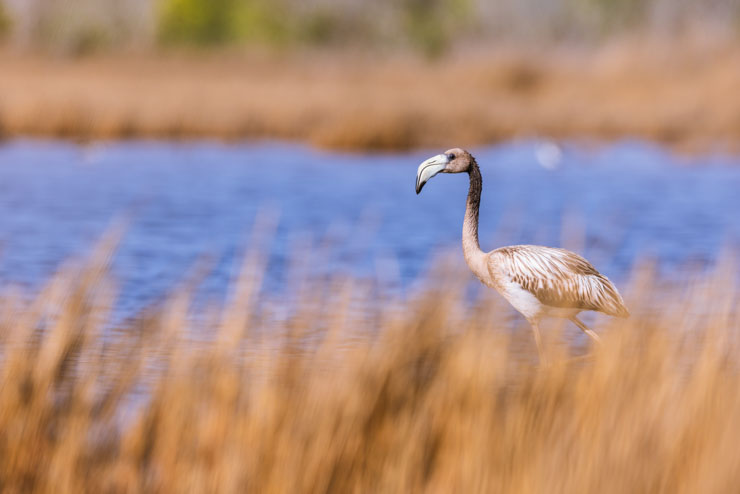
American Flamingo






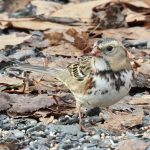
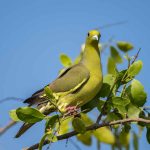

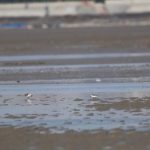
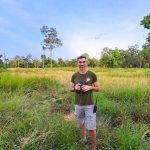
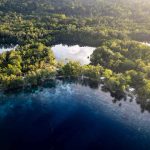
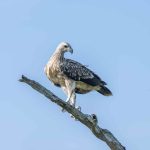
Birders who don’t see crakes for what they are, aren’t worthy. Of anything.
Nice write-up — I enjoyed the suspense. Do you normally rely more on sound than sight for crakes, or was this sighting unusually lucky? Also, any tips for clients who get blasé about rare birds?
Birder gods (as opposed to bird gods) shall frown upon those who are flippant with rallids!
Thank you. Yes to your first two, and love is the answer for the last.